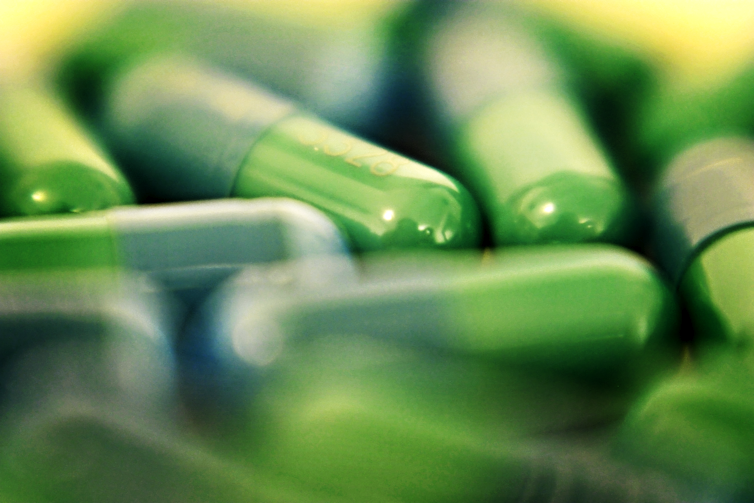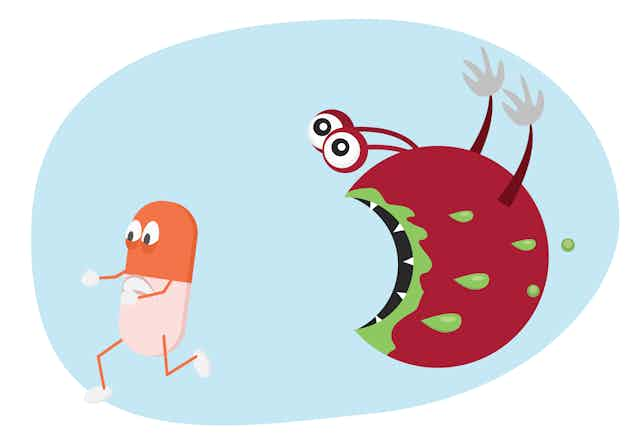Antibiotic resistance has the potential to affect everyone. Most people would have heard about antibiotic resistance and studies show many are aware the cause of the current crisis is due to their overuse. But few know how and where the resistance occurs.
A recent study revealed 88% of people think antibiotic resistance occurs when the human body becomes resistant to antibiotics. This isn’t entirely true. The resistance can happen inside our body as it is the host environment for the bacteria; but the important distinction is that the body’s immune system doesn’t change – it’s the bacteria in our bodies that change.
What is antibiotic resistance?
Antibiotic resistance happens when bacteria change in a way that prevents the antibiotic from working. Changes in bacteria, known as resistance mechanisms, come in different forms and can be shared between different bacteria, spreading the problem.
Bacteria and fungi naturally use antibiotics as weapons to kill each other to compete for space and food; they have been doing this for over a billion years. This means they are used to coming into contact with antibiotics in the environment and developing and sharing antibiotic resistance mechanisms.
Most antibiotics we use today are modelled on the ones naturally created by bacteria and fungi. In the past, if the bacteria didn’t encounter the antibiotic they developed resistance for, they could lose the resistance mechanism. But now, because we are overusing antibiotics, the bacteria are encountering them all the time and therefore keeping their resistance mechanisms. Hence the crisis.
Bacteria frequently now encounter antibiotics in the environment (such as the soil) as well as in our bodies and those of animals. Antibiotic resistant bacteria mostly survive these encounters and then multiply in the same manner.
This results in an increased chance of people being infected with antibiotic resistant disease-causing bacteria, which can lead to increased complications, prolonged hospital stays and an increased risk of death.
How resistance develops and spreads
Some bacteria are naturally resistant to certain antibiotics. For instance, the antibiotic vancomycin cannot kill Escherichia coli (E. coli), while metronidazole can’t kill the whooping cough-causing Bordetella pertussis. This is why different antibiotics are prescribed for different infections.
But now, bacteria that could previously be killed by certain antibiotics are becoming resistant to them. This change can occur in two ways:
- Genetic mutation
- Horizontal gene transfer.
Genetic mutation is when bacterial DNA, that stores the bacteria’s information and codes for its traits, randomly changes or mutates. If this change, that could be resistance to antibiotics, helps the mutated bacteria survive and reproduce then it will thrive and outgrow the unchanged bacteria.
Random mutation would happen with or without antibiotic overuse. However, the resistant changes only stay in the bacterial population if the antibiotic is constantly present in the bacteria’s environment. Our overuse of antibiotics is resulting in the propagation and maintenance of these changes.

Horizontal gene transfer is when one bacterium acquires antibiotic resistance mechanisms – carried by a particular gene – from other bacteria.
This can occur between the same kinds of bacteria, such as between E. coli that cause urinary tract infections and E. coli that cause food poisoning; or between different kinds of bacteria, such as between E. coli and antibiotic-resistant Staphylococcus aureus (MRSA).
Horizontal gene transfer can also occur between the natural and disease-causing bacteria in our gut. So our gut can act as a source of antibiotic resistance genes.
This is why it is important to only take antibiotics when they are needed. As bacteria can transfer multiple resistance mechanisms at once and can become resistant to many types of antibiotics very quickly – known as multi-drug resistance.
How bacteria block antibiotics from working
There are a number of ways bacteria can resist antibiotics.
1) Cell entry - many antibiotics need to enter bacteria to kill them. They use special holes on the bacteria’s surface to do this but bacteria can close these holes or get rid of them completely.
2) Efflux pumps – bacteria can use these to pump antibiotics out of themselves before the drugs have had a chance to work. Efflux pumps can be specific to one type of antibiotic or can pump out several different types.
3) Antibiotic degrading enzymes – these molecules are produced by bacteria to degrade antibiotics so they no longer work.
4) Antibiotic altering enzymes – similar to antibiotic degrading enzymes, these molecules change the structure of the antibiotic so it no longer works against the bacteria.
5)Physical changes to antibiotic targets – different antibiotics target different structures inside bacteria. Bacteria are able to change their structures so they still function exactly as they did before but so the antibiotic doesn’t recognise them.
These mechanisms can occur when the bacteria are inside us, inside animals or out in the environment. This is why using antibiotics in the farming industry is such a problem. The bacteria can become antibiotic-resistant in the animals, and then they can pass into the environment through things like manure.
It’s essential we safeguard our current antibiotics by using them appropriately and invest time and money into developing new ones, which we will hopefully not take for granted.

